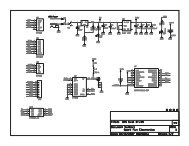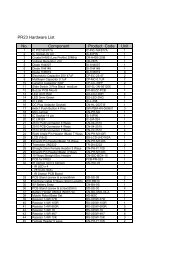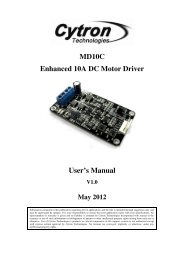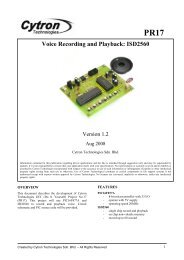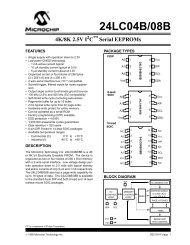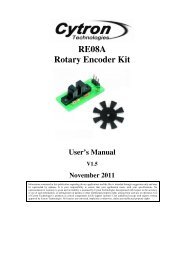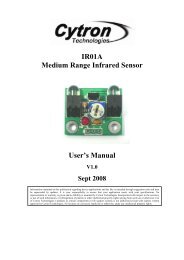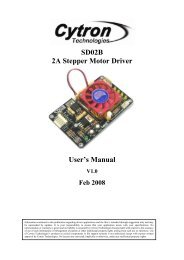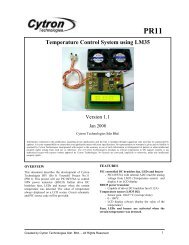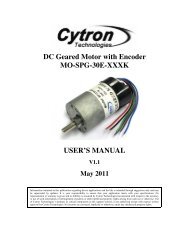Three-Axis Digital Compass IC HMC5883L
Three-Axis Digital Compass IC HMC5883L
Three-Axis Digital Compass IC HMC5883L
Create successful ePaper yourself
Turn your PDF publications into a flip-book with our unique Google optimized e-Paper software.
<strong>HMC5883L</strong><br />
SELF TEST OPERATION<br />
To check the <strong>HMC5883L</strong> for proper operation, a self test feature in incorporated in which the sensor offset straps are<br />
excited to create a nominal field strength (bias field) to be measured. To implement self test, the least significant bits (MS1<br />
and MS0) of configuration register A are changed from 00 to 01 (positive bias) or 10 (negetive bias).<br />
Then, by placing the mode register into single or continuous-measurement mode, two data acquisition cycles will be made<br />
on each magnetic vector. The first acquisition will be a set pulse followed shortly by measurement data of the external<br />
field. The second acquisition will have the offset strap excited (about 10 mA) in the positive bias mode for X, Y, and Z<br />
axes to create about a 1.1 gauss self test field plus the external field. The first acquisition values will be subtracted from<br />
the second acquisition, and the net measurement will be placed into the data output registers.<br />
Since self test adds ~1.1 Gauss additional field to the existing field strength, using a reduced gain setting prevents sensor<br />
from being saturated and data registers overflowed. For example, if the configuration register B is set to 0xA0 (Gain=5),<br />
values around +452 LSb (1.16 Ga * 390 LSb/Ga) will be placed in the X and Y data output registers and around +421<br />
(1.08 Ga * 390 LSb/Ga) will be placed in Z data output register. To leave the self test mode, change MS1 and MS0 bit of<br />
the configuration register A back to 00 (Normal Measurement Mode). Acceptable limits of the self test values depend on<br />
the gain setting. Limits for Gain=5 is provided in the specification table.<br />
Below is an example of a “positive self test” process using continuous-measurement mode:<br />
1. Write CRA (00) – send 0x3C 0x00 0x71 (8-average, 15 Hz default, positive self test measurement)<br />
2. Write CRB (01) – send 0x3C 0x01 0xA0 (Gain=5)<br />
3. Write Mode (02) – send 0x3C 0x02 0x00 (Continuous-measurement mode)<br />
4. Wait 6 ms or monitor status register or DRDY hardware interrupt pin<br />
5. Loop<br />
Send 0x3D 0x06 (Read all 6 bytes. If gain is changed then this data set is using previous gain)<br />
Convert three 16-bit 2’s compliment hex values to decimal values and assign to X, Z, Y, respectively.<br />
Send 0x3C 0x03 (point to first data register 03)<br />
Wait about 67 ms (if 15 Hz rate) or monitor status register or DRDY hardware interrupt pin<br />
End_loop<br />
6. Check limits –<br />
If all 3 axes (X, Y, and Z) are within reasonable limits (243 to 575 for Gain=5, adjust these limits basing on the<br />
gain setting used. See an example below.) Then<br />
All 3 axes pass positive self test<br />
Write CRA (00) – send 0x3C 0x00 0x70 (Exit self test mode and this procedure)<br />
Else<br />
If Gain



